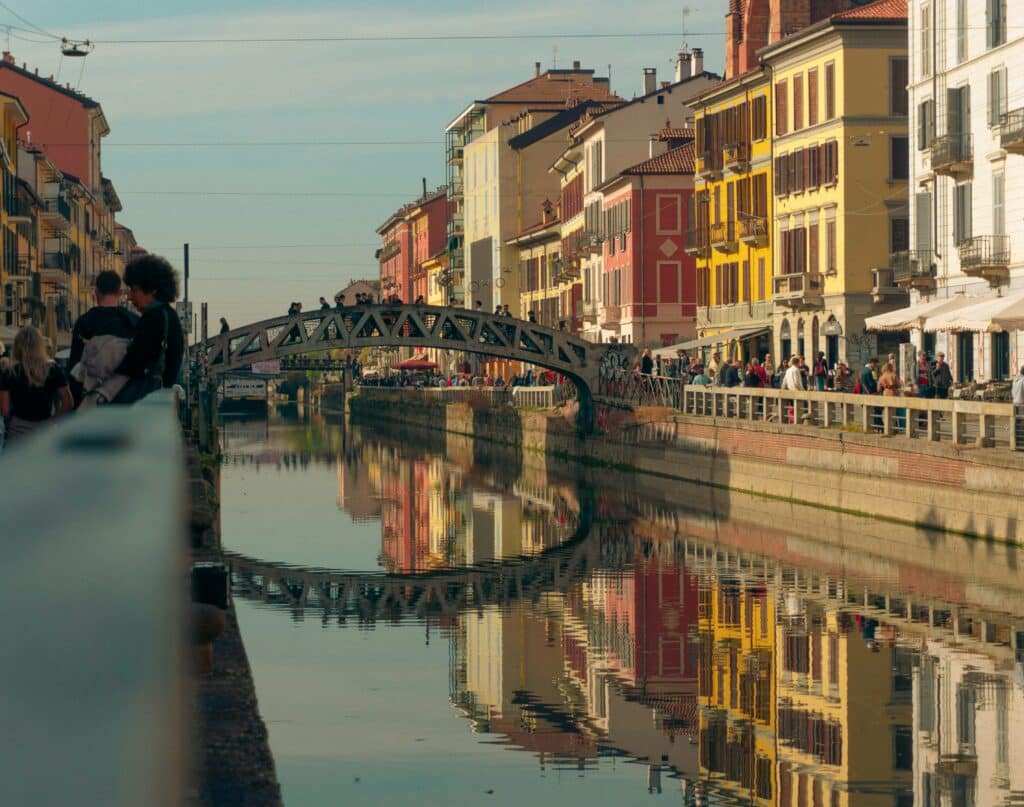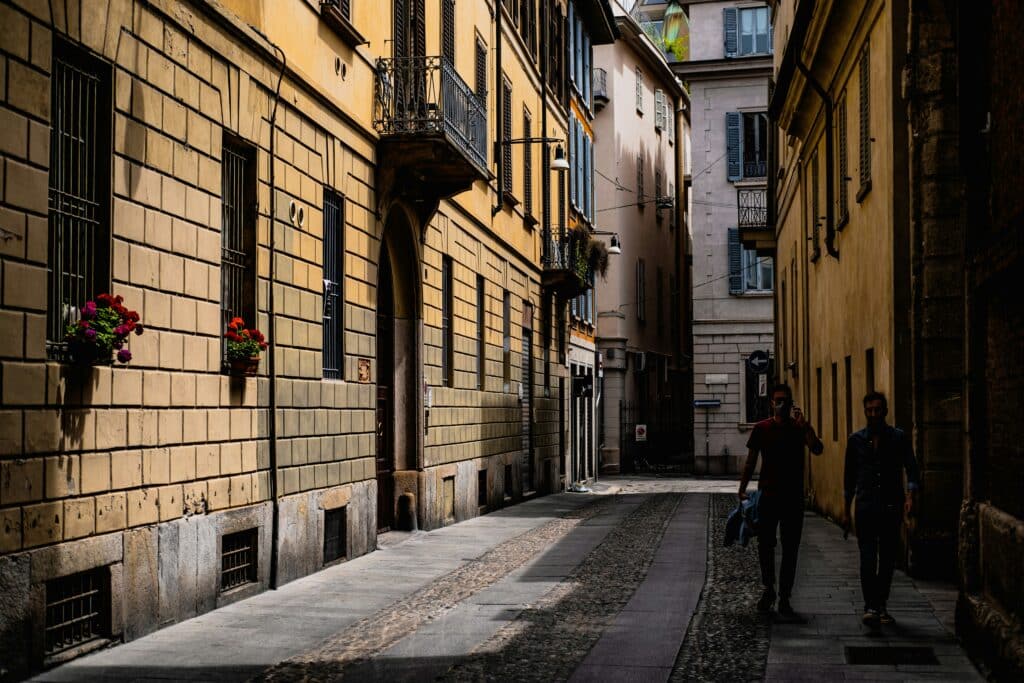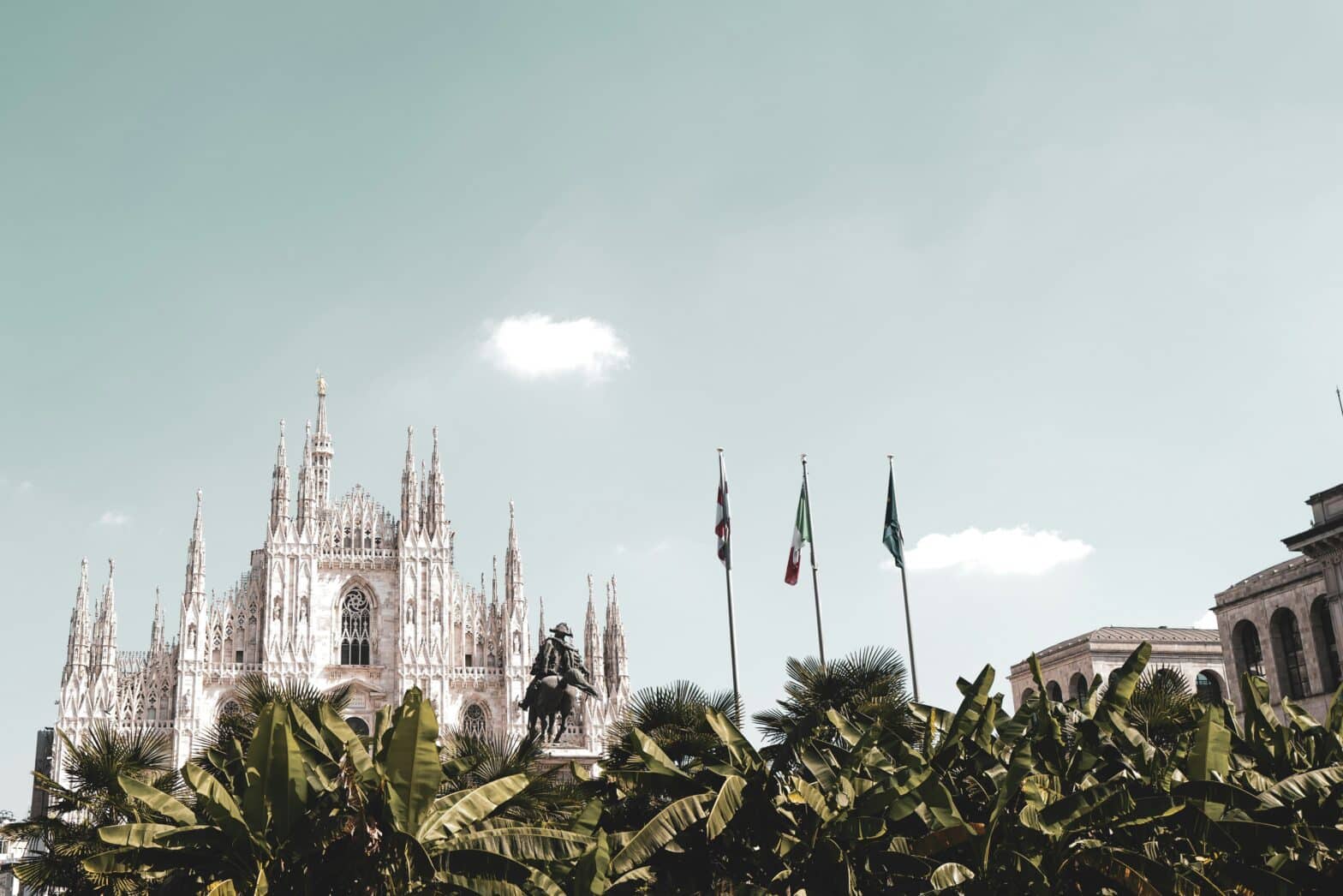Recognised as the fashion capital, industrial heartland, commercial centre and financial hub of Italy, Milan has settled over 350,000 expatriates over the years. A bustling metropolis, Italy’s second largest city offers plenty of opportunities for expats whether entrepreneurial, professional, cultural or lifestyle. Here’s a guide to relocating to Lombardy’s capital on your own, as a couple or with your family, where, they say, anything is possible…
Living in Milan: the pros
- Many job opportunities as Milan is the most economically dynamic city in the country.
- High quality of life, especially for families.
- Milan is the most cosmopolitan city in Italy
- Cost of living is lower than in major European cities such as Paris or London.
- The city is home to many international schools and prestigious universities.
- Milan’s geographical location makes it an excellent base from which to explore Italy and Europe (frequent travellers, take note!)
- Italian cuisine!
- Numerous outdoor activities. Milan is less than two hours away from Lake Maggiore or Lake Como or the Parco nazionale della Val Grande.
Accommodation in Milan
Where to live?
Property in Italy’s second city is among the most expensive in the country, both to rent and to buy. Most expats choose to rent. Milan offers a wide range of accommodation available for rent (affitassi), from studios (monolocale) to three-bedroom (trilocale), four-bedroom (quadrilocale) and very spacious penthouses (attici). You can choose between unfurnished (vuoto), furnished (arredato) or semi-furnished rentals (semi arredato).

Rental conditions
Although leases are generally for a minimum of four years, it is possible to find shorter leases or to negotiate the length of the contract with the landlord. In Milan, as in the rest of Italy, it is customary to pay a deposit equivalent to three months’ rent (caparra) and between two and three months’ rent in advance when signing the lease. The deposit is put into a bank account and will be returned in full, in part or not at all upon departure. Tenancy registration fees are split between the tenant and the property owner. Some landlords may ask you for a copy of your employment contract.
In addition to the rent, you may have to pay community fees (costs related to the maintenance and use of communal areas. Before signing a lease, check with your landlord directly.
Finding the right accommodation?
There are many online resources for finding accommodation in Milan, such as:
immobiliare.it
casa.it
Idealista
These property websites regularly publish property listings for rent and for sale. You can also use the services of an estate agent, providing you give them very specific criteria as to your budget, neighbourhood, number of bedrooms, etc..
If you are a student, websites such as Housing Anywhere offer a wide range of shared accommodation.
Which areas best suit your lifestyle?
Brera : Located in the heart of the centro storico, Brera is an elegant district of cobbled streets where the old and the new blend harmoniously, attracting lovers of trendy art. It’s packed with historical sites, cultural attractions, restaurants for foodies of all kinds and countless shops. Brera is the least ‘residential’ area of Milan, but some expats, including families, value being close to the hustle and bustle of the city while still being close to large green spaces. The only drawback is that property here is limited and expensive.

Porta Venezia : Close to the Quadrilatero della Moda, Porta Venezia is also a central district, home to numerous cultural centres and gardens (Indro Montanelli Gardens) and, according to Time Out, one of the trendiest districts in the world. It is a multicultural, dynamic and safe area, popular with the LGBT community and city lovers.
Navigli : lies to the south-west of the city centre. This picturesque canal district is popular with young singles and couples for its tranquil, bohemian atmosphere and bustling cultural life.
Porta Romana : Situated in the south Milan, this historic district is undergoing a complete transformation. Its proximity to the city centre makes it a popular area for young families and students. It’s a great place to live, with a peaceful yet lively atmosphere.
Zona Tortona : About 3 km from the city centre, is a quiet, peaceful area popular with expat families for its green spaces, cultural centres and infrastructure. Bloom International School is located here!
Porta Nuova : to the north of the historic centre, near Brera, is the modern business district for young professionals who want to live close to work.
San Siro : This quiet residential area to the west of the city centre offers reasonably priced accommodation and is home to two international schools and… to the famous Giuseppe Meazza football stadium
Isola : A fast-growing, trendy district that combines historic buildings with contemporary buildings, Milan’s ‘island’ is currently very popular among expats.
And in 2025 … : CityLife : One of the most ambitious urban projects in Europe, covering 366,000 m2, CityLife will, by 2025. comprise both a business district, shopping centre and residential complex. Famous architects, including Zaha Hadid,are the masterminds behind this futuristic gigantic project.
Working in Milan
The capital of Lombardy is Italy’s economic centre; it is home to many multinational companies in the fashion, design, finance, high-tech, transport, biotechnology and media sectors. Milan is also home to prestigious universities such as UNIMI and Politecnico and attracts start-ups from all over the country.
Taking advantage of the city’s economic dynamism, expats can benefit from numerous professional opportunities in the above-mentioned sectors, but they can also negotiate salaries that are among the best in the country.
To find a job in an international company based in Milan or in a Milanese company with an international outlook, a good command of English is essential and the ability to work in Italian is highly recommended and it may be required in some sectors!.
Useful links to help you find a job
Jobs in Milan
Lavorare.net
The European Employment Mobility Portal (EURES)
Ticonsiglio
Clicca Lavoro
Networking is also an excellent way to find a job in Milan, as in other European cities. You can contact local expat networks such as Milan Accueil (French-speaking) or the American Business Group in Milan (English-speaking).
Daily life in Milan
Cost of living
If salaries are high in Milan, so is the cost of living. In fact, Lombardy’s capital is one of the most expensive cities in Italy, especially when it comes to accommodation, leisure activities and education in international schools. A three-bedroom apartment in the city centre costs €2,846.29 a month, utilities electricity, gas, water amount to €223.96, and up to €25,000 for annual tuition fees at an international school.
By comparison, the cost of living is still lower than in other major European cities such as London or Paris.
Getting around
Milan offers a wide range of transport options, including:
- The Public transport system (5 metro lines and over 80 bus and tram lines), managed by Azienda Trasporti Milanesi (ATM), which operates during the day and part of the night on request, is very efficient and covers a large part of the Milan area.
- By car : You’ll need to be patient: traffic is heavy and parking spots are scarce. You can go for car-sharing through platforms such as ShareNow or e-vai. It’s cheaper and logistically more efficient! It’s worth noting that the centre is protected by a restricted traffic zone (ZTL).
- Individual or shared bikes (BikeMi, RideMovi, etc.)
Parla italiano?
If you’re planning to live in Milan for several years, it’s a good idea to learn Italian. As for any expatriate experience, it’s important to know the language of the host country to help you integrate into society, make your daily life easier, find better job opportunities and make friends with the locals! A number of public schools, such as Scuola Leonardo da Vinci and ELLCI Milano , offer Italian language courses and modules, and the Municipality of Milan also offers Italian language courses for foreigners.

Family life in Milan
Childcare
There are three main childcare options for children aged between three months and three years:
– Public daycare (asilo nido or nido d’infanzia) is run by the City of Milan and offers childcare services at a cost based on household income. Please note that places are limited and waiting lists can be long! Applications can be made online.
– Private daycare: There are a wide range of private crèches available. Some are bilingual (Italian + another language); others offer specialised activities or a specific approach; most offer flexible hours for working parents.
– A nanny is an alternative to collective childcare; it provides more flexibility to parents of children aged 0-6.
Education in Milan
Milan is home to no less than a dozen international schools for children aged 2 to 18, offering a variety of curricula, some of which are multilingual. Among the most prestigious are Bloom International School, The British School of Milan and Lycée Stendhal de Milan. School fees range from €5040 to €25,000 per year.
Healthcare in Milan
Public or private?
While the Italian public health system (or SSN) is well developed and accessible to expats living in Italy almost free of charge, many expats choose to turn to the private sector and take out private international health insurance. With the latter, they get a more effective and flexible cover, and as well as shorter waiting times for treatment and reimbursement.
Get more information on how the Italian healthcare system works!
The best healthcare facilities
- Grande Ospedale Metropolitano Niguarda is the 2nd best hospital in Italy according to Newsweek’s ranking of Italy’s best hospitals.It is a multidisciplinary institution with modern facilities and specialised care centres.
- Ospedale San Raffaele – Gruppo San Donato ranked 4th by Newsweek, this hospital is both a research institute, medical facility and teaching centre, combining high technology with a multidisciplinary approach.
- Ospedale San Raffaele Turo – Gruppo San Donato (this hospital brings together eight specialised health centres; cutting-edge medical solutions in a wide range of fields, from urology to psychiatry)
- Milan Medical Centre is a private hospital with multilingual staff providing specialized healthcare in different specialties. It is probably the most international hospital in the city.
